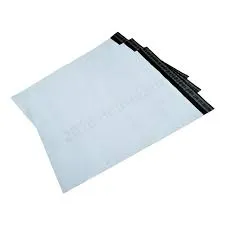wrapping pallets with plastic wrap
Wrapping Pallets with Plastic Wrap A Practical Guide
In the world of logistics and warehousing, one critical task that often goes overlooked is the proper wrapping of pallets. This process is essential for ensuring the safe transport and storage of goods. Using plastic wrap, also known as stretch film, is one of the most efficient and effective methods for securing products on pallets. This article will explore the importance of wrapping pallets, the benefits of using plastic wrap, and some tips for optimal wrapping techniques.
Why Wrap Pallets?
Wrapping pallets serves several important functions. First and foremost, it helps to keep goods stable and secure during transportation. When items are stacked on a pallet, they can easily shift or topple over if not properly secured. A tightly wrapped pallet minimizes this risk, preserving the integrity of the products and preventing damage.
Additionally, wrapping protects the contents from external factors such as dust, moisture, and contaminants. This is especially crucial for items sensitive to environmental conditions. By providing a protective barrier, plastic wrap ensures that products arrive at their destination in pristine condition.
Benefits of Using Plastic Wrap
Plastic wrap offers numerous advantages over other wrapping materials. Its stretchability allows it to conform tightly to the shape of the products, providing a secure hold. This elasticity helps to prevent the wrap from breaking or coming undone during transit.
Another benefit is the transparency of plastic wrap, which enables easy identification of the wrapped contents. This feature is particularly useful in warehouses or distribution centers where efficient inventory management is essential.
Moreover, using plastic wrap can be a cost-effective solution. Compared to other materials, such as shrink wrap or strapping, plastic wrap is often less expensive and requires minimal tools—usually just a hand-held dispenser or a wrapping machine.
wrapping pallets with plastic wrap

Tips for Optimal Wrapping
To achieve the best results when wrapping pallets, consider the following tips
1. Choose the Right Thickness Plastic wrap comes in various thicknesses. For heavier loads, opt for thicker wrap to ensure durability.
2. Start from the Bottom Begin wrapping at the base of the pallet and work your way up. This will help secure the weight and create a solid foundation.
3. Wrap Overlapping Layers As you work your way up, make sure to overlap the layers of wrap by at least 50%. This technique enhances stability and security.
4. Seal the Edges After reaching the top, ensure that the edges of the wrap are securely tucked and sealed. This will prevent the wrap from unraveling during transport.
5. Use a Wrapping Machine If wrapping pallets is part of your regular operations, consider investing in a wrapping machine. These devices can significantly speed up the process and enhance the uniformity of the wrap.
In conclusion, wrapping pallets with plastic wrap is a vital process for safe and efficient logistics. By understanding its importance, leveraging its benefits, and implementing effective wrapping techniques, businesses can enhance their operational efficiency and protect their products during transport. Make plastic wrap an integral part of your pallet management strategy, and you will reap the benefits in the long run.
-
Stretch Film Solutions: A Comprehensive GuideNewsJun.03,2025
-
Stretch and Shrink Packaging SolutionsNewsJun.03,2025
-
Revolutionizing Packaging with Modern Wrapping SolutionsNewsJun.03,2025
-
Innovative Solutions for Silage and Window TintingNewsJun.03,2025
-
Efficient Packing with Stretch Wrap SolutionsNewsJun.03,2025
-
Effective Packaging with Stretch Wrap SolutionsNewsJun.03,2025
-
Have the freedom of customizing your custom mailers any way you want! Our dedicated packaging support will help deliver you the mailing experience you need to elevate your shipping experience to the next level! Start making a strong impression on your customers and stand out from your competitors! -
LIYA uses high quality raw materials which directly purchased from large enterprises domestic and overseas such as PetroChina, Sinopec, Sabic, Equate, ExxonMobil, Dow Chemical, Total, and Borouge, ensuring the price advantage and quality of the raw materials. -
LIYA uses high quality raw materials which directly purchased from large enterprises domestic and overseas such as PetroChina, Sinopec, Sabic, Equate, ExxonMobil, Dow Chemical, Total, and Borouge, ensuring the price advantage and quality of the raw materials.





